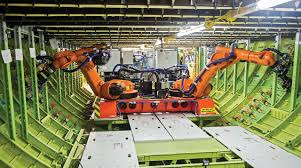
Breaking News
 $26M Frozen on Blockchain - With One Click
$26M Frozen on Blockchain - With One Click
 Italy are on national strike shutdown rejecting digital enslavement...
Italy are on national strike shutdown rejecting digital enslavement...
 The following U.S. states are currently using the rebranded "Reporty Homeland Security" so
The following U.S. states are currently using the rebranded "Reporty Homeland Security" so
 NATO Chief Urges Europe To Prepare For Long-Term World War With Russia, China, Iran & North Korea
NATO Chief Urges Europe To Prepare For Long-Term World War With Russia, China, Iran & North Korea
Top Tech News
 HUGE 32kWh LiFePO4 DIY Battery w/ 628Ah Cells! 90 Minute Build
HUGE 32kWh LiFePO4 DIY Battery w/ 628Ah Cells! 90 Minute Build
 What Has Bitcoin Become 17 Years After Satoshi Nakamoto Published The Whitepaper?
What Has Bitcoin Become 17 Years After Satoshi Nakamoto Published The Whitepaper?
 Japan just injected artificial blood into a human. No blood type needed. No refrigeration.
Japan just injected artificial blood into a human. No blood type needed. No refrigeration.
 The 6 Best LLM Tools To Run Models Locally
The 6 Best LLM Tools To Run Models Locally
 Testing My First Sodium-Ion Solar Battery
Testing My First Sodium-Ion Solar Battery
 A man once paralyzed from the waist down now stands on his own, not with machines or wires,...
A man once paralyzed from the waist down now stands on his own, not with machines or wires,...
 Review: Thumb-sized thermal camera turns your phone into a smart tool
Review: Thumb-sized thermal camera turns your phone into a smart tool
 Army To Bring Nuclear Microreactors To Its Bases By 2028
Army To Bring Nuclear Microreactors To Its Bases By 2028
 Nissan Says It's On Track For Solid-State Batteries That Double EV Range By 2028
Nissan Says It's On Track For Solid-State Batteries That Double EV Range By 2028
Robots at Boeing: Ex-Boeing Employee Chimes In On Robotics

"XBE" writes ….
Hello Mish
You are 100% correct about the impact of robots in aircraft manufacturing and elsewhere.
I spent 37 years at Boeing as a design engineer (1967-2004). I have a MSME (master of science in mechanical engineering). This is what I know.
The new 777X composite wing plant in Everett shocked the IAM (machinists union) as to how few new jobs were needed.
The same happened at the new Propulsion assembly plant in Charleston. On opening day, IAM was greeted by a huge, giant robot welcoming them.
In 2015, 79300 Boeing employees delivering 700 airplanes. That's 113 employees per airplane.
When I joined Boeing in 1967, Puget Sound had 120,000 employees and Boeing delivered about 300 airplanes (from memory). That's 400 employees/airplane.
Since 1967 there has been a 72% reduction in the number of people it takes to build an airplane!
People I know in the robotic business tell me 60% of today's jobs will be gone in 20 years. You have covered them: trucking, strawberry/cabbage picking, etc.
Ex-Boeing Employee

 Carbon based computers that run on iron
Carbon based computers that run on iron

